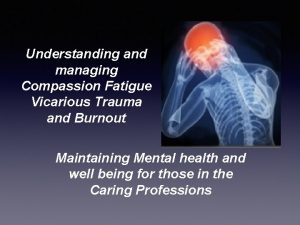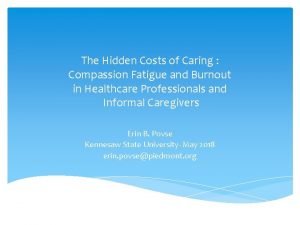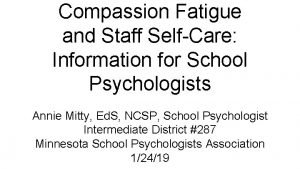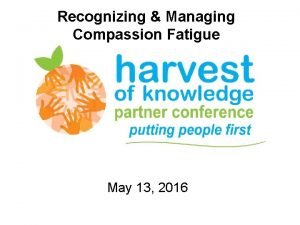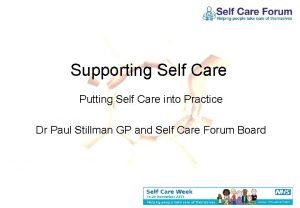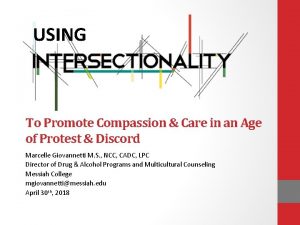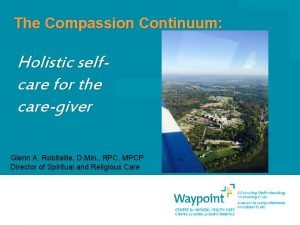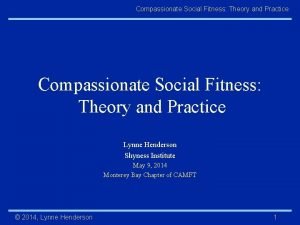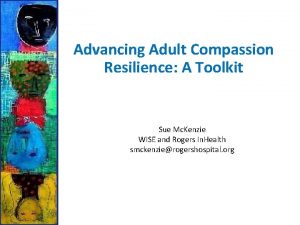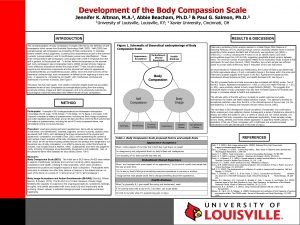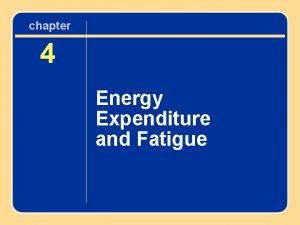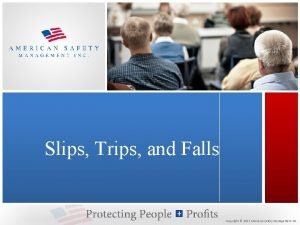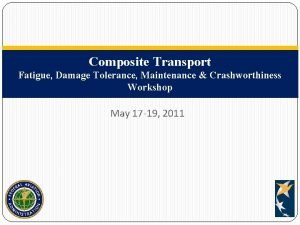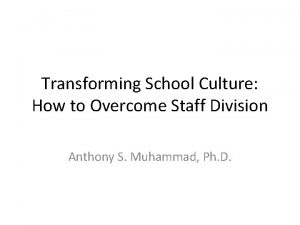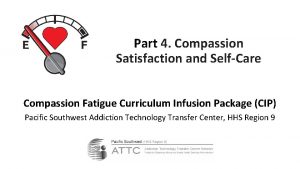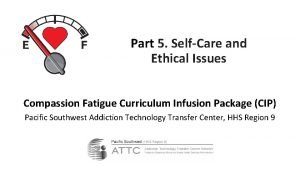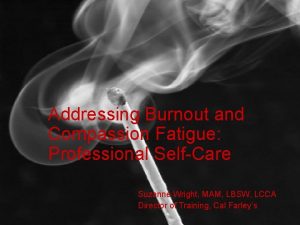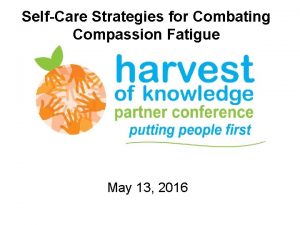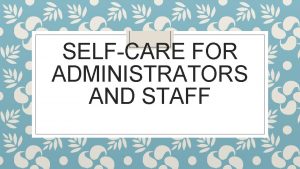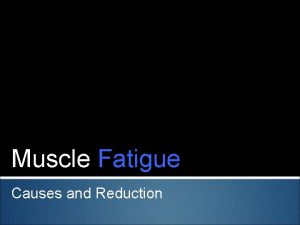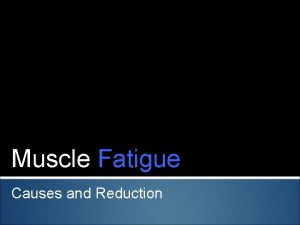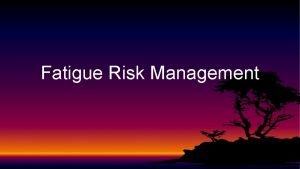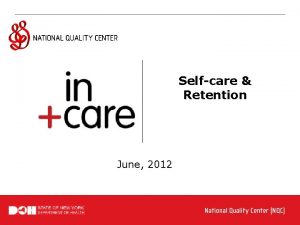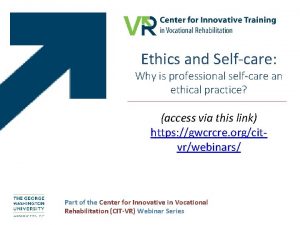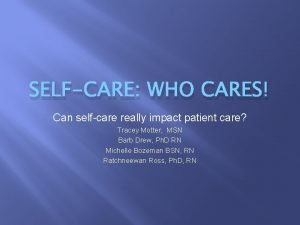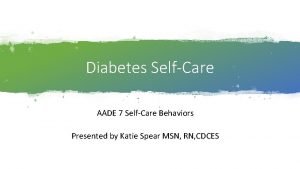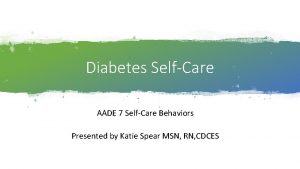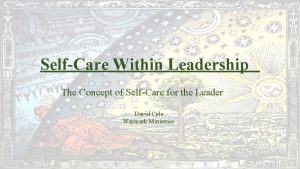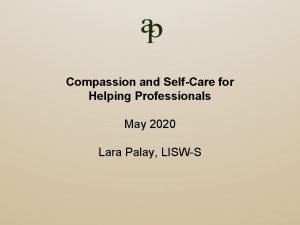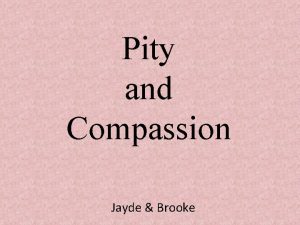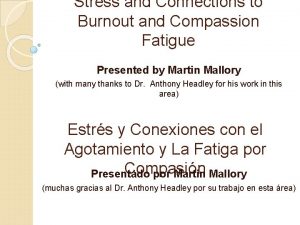Compassion Fatigue and Staff SelfCare Information for School









































- Slides: 41

Compassion Fatigue and Staff Self-Care: Information for School Psychologists Annie Mitty, Ed. S, NCSP, School Psychologist Intermediate District #287 Minnesota School Psychologists Association 1/24/19

Housekeeping and Learning Intentions ● Please care for yourself ○ ○ ○ Water Bathrooms Breaks, standing, questions, and whole group conversation welcome at any time ● Learning Intentions ○ ○ ○ Define compassion fatigue and related terms Discuss school systems contributing to compassion fatigue and what to do Define and discuss self-care

Sympathy and Empathy Short video

Definitions

Simplistic Pre-Definitions Debate and disagreement abound! Sympathy - feeling sorry for or about another’s pain Empathy - walking in another’s shoes/deeper understanding of another’s pain Compassion - feeling moved, when another is suffering, to relieve suffering ● Action toward helping, lessing, alleviating Altruism - selfless behavior or ideals associated with compassion

Biology and Compassion When a person is compassionate or shows compassion (source): ● Heart rate slows ● Oxytocin released ● Brain “lights up” in empathy, caregiving, and pleasure centers Short video

Compassion Paradox We are designed to care for each other and it makes us happy BUT Sometimes it’s too hard, too much, or too (fill in the blank)

Self-Assessment Tool

Compassion Satisfaction ● ● Positive feelings about ability to help and doing work well Feeling good about colleagues, ability to contribute to work and society Strive for high levels of compassion satisfaction All the things not related to compassion fatigue (risk and protective factors caveat - one does not mean the opposite is true)


Compassion Fatigue Definitions vary, are broad or narrow, and are controversial For our purposes, compassion fatigue is: ● Burnout + Secondary Traumatic Stress (Stamm/Pro. QOL) ○ ○ Burnout: gradual, cumulative, negative, hopeless Secondary traumatic stress: sudden, event-based, pervasive (sleep, thoughts) ● Talk a bit about burnout and a bit about secondary traumatic stress ○ Come back to compassion fatigue

Burnout ● ● ● One part of compassion fatigue Can occur without empathy and compassion Slow onset, cumulative build up Adult (teacher) centered 12 phases (Freudenberger and North, 1985)


Burnout ● Factors leading to burnout may include (source): ○ Poor preparation programs, especially for behavior management ○ Lack of autonomy ○ High levels of maladaptive student behavior ○ Interpersonal conflict and lack of support ○ Routinization and boredom


Secondary Traumatic Stress ● One part of compassion fatigue ● Empathy and compassion are present, high levels ○ Those in helping profession may be more likely to already be fatigued (selection bias, source) ● Can be cumulative, may be more likely to be situational or event-based ● More likely to be rapid-onset ● Adult (teacher) involved but child (student) centered

Secondary Traumatic Stress ● Handout/source (widen audience to teachers/educational staff) ● Trauma stewardship (Van Dernoot Lipsky, 2009) ○ “We are stewards not just of those who allow us into their lives, but of our own capacity to be helpful” - J. Conte ● Signs and symptoms of Secondary Traumatic Stress: ○ ○ ○ ○ Hypervigilance and fear Sleeplessness and chronic exhaustion Physical unwellness/ailment Inability to listen Minimizing Guilt Very similar to Posttraumatic Stress Disorder (PTSD)


Compassion Fatigue Again - definitions vary and are broad, controversial For our purposes, compassion fatigue is: ● Burnout + Secondary Traumatic Stress (Stamm/Pro. QOL) ○ ○ Burnout: gradual, cumulative, negative, hopeless Secondary traumatic stress: sudden, event-based, pervasive (sleep, thoughts) ● Secondary Traumatic Stress and Compassion Fatigue often used interchangeably

Compassion Fatigue ● Nurse C. Joinson first used “compassion fatigue” in 1992 and described a “loss in ability to nurture” (source) ● C. R. Figley first used “compassion fatigue” in 1995 and defined it as “Compassion Fatigue is a state experienced by those helping people or animals in distress; it is an extreme state of tension and preoccupation with the suffering of those being helped to the degree that it can create a secondary traumatic stress for the helper” (source)

Compassion Fatigue ● Research in many helping fields (health care, social sciences, vet sciences) ● Compassion fatigue synonyms: secondary trauma, secondary traumatic stress, vicarious trauma, empathic distress, empathic fatigue ● Signs and symptoms in isolation are normal expressions of stress ○ Changing or building into maladaptive or disruptive levels ● Paradox: we must help and care BUT helping and caring is impossible

Compassion Fatigue 5 phases of Compassion Fatigue adapted from/generally attributed to Eric Gentry 1. Zealot: energy, enthusiasm, committed, extra hours, motivated by ideals 2. Irritability: cut corners, avoid, unfocused, forego or degrade own self-care, isolate, mock or complain 3. Withdrawal: exhausted, hopeless, loses patience with students, defensive, neglects self and others, views self as victim 4. Zombie: disdain for students, views others as incompetent, no compassion, autopilot, easily enraged 5. Pathology & Victimization: no action, overwhelmed, physically ill, leave profession OR 6. Maturation & Renewal: conscious choice, strength, renewal, resilience

Compassion Fatigue Signs and symptoms (source) ● ● ● Fight/Flight/Freeze responses Blaming others, complaining about administration Isolation, apathy, poor self-care, compulsive behaviors (addictions) Nightmares, flashbacks Somatic empathy (source) ○ Visceral, involuntary feeling in gut of empathy ● Physical responses (source) ○ Nausea, headaches, dizziness, trouble hearing

Compassion Fatigue Demoralization ● We know well the importance of teaching empathy and valuing empathy in our schools as part of a larger Social Emotional Learning (SEL) and/or Positive Behavior Interventions and Supports (PBIS) framework (see CASEL for lots of research) ● Teachers tend to be highly empathetic and compassionate people ● Many teachers feel called to teach or have a moral/ethical drive to teach, not to just do a job ● Leading into a crisis of demoralized teachers (Santoro) ○ Current politics/political climate, state teacher strikes, right to work, viral teacher resignation letters ● Here we sit, charged with employing and retaining a whole person

Demoralization (Santoro, 2018) quick reference ● Cites statistics (attrition) and relays personal stories from the field of teaching ○ Teacher shortage - need to improve retention by recognizing and valuing moral obligations ● Violating moral obligations leads to shame (see Dr. Brown’s work) and demoralization ○ ○ Impact on career, health, family, morals and values Experienced, expert teachers are more prone to demoralization ● Demoralization is a problem with the systems in teaching, not the teacher ● Sources of demoralization: causing harm and degrading the profession ○ ○ Harm: standardized testing, prescribed curriculum, academic achievement at all costs Degrading: performance pay, top-down mandates and pressures, fast-track licensures, prescription or corruption of the art of teaching and supportive staff development (PLCs)

Demoralization ● How to remoralize? ● Ideas for teachers, leaders, unions ● Leaders: listen to teachers/hear moral concerns, re-conceptualize initiatives (avoid initiative fatigue, 3 things/SIP), encourage dissent and teacher leaders, empower teachers to exercise choice whenever possible, share responsibility ● Mentions a dissertation (H. Carlson-Jacquez) in which a demoralization assessment was created

Discussion

Discussion ● What do we do now?

Discussion

Discussion: Big Ideas to Smaller Steps ● Foster positive progress by being a change agent (see Best Practices in Systems-Level Change, Castillo and Curtis; contact your legislators) ● Focus on Equity and Social Justice (related article and TED Talk Playlist) ○ Best to engage in action on behalf of others instead of kindness, foster empathy while engaging in systems change, value intersectional advocacy, acknowledge the moral reasons why we do our jobs ● Practice good pedagogy with staff: use school-wide meeting protocols, give learning intentions/action items/summaries/expectations for next steps (be clear, give permission, say what to do if there’s difficulty or problems) ● Adopt and promote school-wide SEL/PBIS framework: help and expect staff to achieve highest standards of values too (not just for students), common language and value structure (students, staff, school, community) ● Professional Development: differentiated and with choice, give information about trauma organized/trauma informed teaching (NCTSN)

Discussion: Slightly Less Big Ideas ● Advocate with your administrators and leaders (TED Talk Playlist on the importance of self-care) and help them take risks/move away from the norm ● Assess and analyze: collect data from multiple sources (staff performance evaluations, Pro. QOL, observations, etc. ) and analyze; protect anonymity and reduce risk ● Mindfulness for adults (research on technology), MFE class/PD ● Staff climate: watch out for each other and encourage staff culture that’s caring and watchful ● Staff community: foster safe communities of support made of and for teachers/school staff and allow space/time during the day for connection

Discussion: Even Less Big Ideas ● Encourage healthy boundaries: watch your overworkers, revisit and discuss ethics frequently, facilitate debriefing, make it okay to say no (or yes) ● Watch for tipping point into compassion fatigue, catch early ○ Recognize the first step into phases of compassion fatigue is: ○ Zealot: energy, enthusiasm, committed, extra hours, motivated by ideals ● Teach other mental health providers to do the same (foster staff climate and community, watch boundaries and tipping point) ● Focus on Self-Care

Self-Care

University of British Columbia


Self-Care in Education ● Passive ○ Newsletters, comments, encouragement, modeling ● Active ○ Professional Development, released time ● Culture ○ Replacing a staff meeting or other standing meeting ○ Administration not present (but cared for as well) ○ Intentional groupings ○ Full support, practice, and buy-in by as many stakeholders as possible

Self-Care in Education ● Possible General Themes (Quarterly, Semester, Annual) ○ Team building ○ Journaling ○ Self-directed or semi-directed using 6 or 8 areas ● Weave in accountability ○ Optional (protect and minimize risk) buddy or small teams ○ Always revisit material, teach new, summarize, and assign pracitce

Self-Care in Education ● Possible Monthly Themes ○ September: team building with icebreakers ○ October: self-awareness and reflection ○ November: gratitude ○ December: team building with games and humor ○ January: drumming ○ February: team building and character strengths ○ March: self-compassion ○ April: allostatic load and stress ○ May: summary and evaluation

Resources Demoralized: Why Teachers Leave the Profession They Love and How They Can Stay by Doris A. Santoro (2018); interview/short article with Santoro Greater Good Science Center and Greater Good Magazine National Child Traumatic Stress Network (NCTSN) Compassion Fatigue Awareness Project Collaborative for Academic, Social, and Emotional Learning (CASEL) A note about pictorial representations of equality and equity

Contact Info: Annie Mitty ammitty@district 287. org

Thank You!
 Compassion fatigue signs
Compassion fatigue signs Compassion fatigue vs burnout
Compassion fatigue vs burnout Compassion fatigue handout for teachers
Compassion fatigue handout for teachers Compassion fatigue definition
Compassion fatigue definition Oea.sundirect
Oea.sundirect Libby whittaker
Libby whittaker Examples of self care
Examples of self care Uni due wiing
Uni due wiing Benefits of self compassion
Benefits of self compassion Saviour he can move the mountains
Saviour he can move the mountains Compassion character trait
Compassion character trait Compassion fokuseret terapi øvelser
Compassion fokuseret terapi øvelser Compassion & forgiveness in the great gatsby
Compassion & forgiveness in the great gatsby Project compassion 2016
Project compassion 2016 Compassion care counseling
Compassion care counseling Compassion continuum
Compassion continuum Small steps for compassion
Small steps for compassion Lorana bartels
Lorana bartels Splagchnizomai
Splagchnizomai Everyone needs compassion the kindness of a savior
Everyone needs compassion the kindness of a savior Peter stevenson compassion in world farming
Peter stevenson compassion in world farming Too much compassion
Too much compassion Breast
Breast Health and fitness: theory and practice
Health and fitness: theory and practice Compassion resilience toolkit
Compassion resilience toolkit There is no jew nor greek slave or free
There is no jew nor greek slave or free Clothe yourselves with compassion
Clothe yourselves with compassion Self compassion mantra
Self compassion mantra Body compassion scale
Body compassion scale Compassion focused therapy
Compassion focused therapy Energy expenditure and fatigue
Energy expenditure and fatigue Age fatigue inattentiveness eyesight and footwear are
Age fatigue inattentiveness eyesight and footwear are Desiderata go placidly
Desiderata go placidly Fatigue and damage tolerance course
Fatigue and damage tolerance course Keswick high school staff
Keswick high school staff Elms middle school
Elms middle school Mearns castle high school
Mearns castle high school Marriotts ridge bell schedule
Marriotts ridge bell schedule Isbell middle school bell schedule 2021
Isbell middle school bell schedule 2021 Deep run elementary
Deep run elementary Darvel primary school uniform
Darvel primary school uniform Transforming school culture: how to overcome staff division
Transforming school culture: how to overcome staff division
